BASIC PROJECT DATA
Project ID: PA1A165
NEED AND ADDED VALUE FOR THE DANUBE REGION STRATEGY
The port of Linz is located on the Rhine – Danube Core Network Corridor. The project aims at improving the accessibility of the port and to strengthen the multimodal TEN-T Core Network in order to increase the competitiveness of the European economy.
Between 2013 and 2015 studies were prepared for the expansion of the trimodal Port of Linz, consisting of a port development master plan, detailed designs for the development of the port’s railway station and the initiation of works (executive designs required for the acquisition of building permits). Based on these results, the current project was launched.
OBJECTIVE(S) OF THE PROJECT AND PLANNED ACTIVITIES
The project concerns the modernisation and extension of the existing rail and road infrastructure in the port. It specifically foresees the building of rail and road connections into and within the port, the enhancing of the port’s container terminal and the construction of a direct access between the port and the port railway station, including the electrification of the port’s railway network.
TRANSBOUNDARY IMPACT
Increased attractiveness of the port in the TEN-T Core Network.
PROJECT BENEFICIARIES / TARGET GROUPS
- Railway companies
- Port operators
- Port tenants
- Forwarding companies
- Port administrations in the Danube and Black Sea Region
STATUS AND TIMEFRAME
Start date: July 2017
End date: December 2023
FINANCING
Total budget: 122,901,347 EUR
EU funds: 24,580,269 EUR are funded by Connecting Europe Facility (CEF) 2014 – 2020
PROJECT TEAM
Project leader: LINZ SERVICE GmbH (website: www.linzag.at)
Address: Regensburger Straße 3, 4020 Linz / Austria
Contact data: ; +43 (0) 732/3400-6940
PROJECT ENVIRONMENT
STRATEGIC REFERENCE
The project addresses key priorities of the European Union transport policy such as:
- Europe 2020, strategy for smart, sustainable and inclusive growth: to comply with reducing greenhouse gas emissions by 20% (or even 30%, if the conditions are right) lower than 1990, reduce energy consumption by 20% through increased energy efficiency, to meet 20% of energy needs from renewable sources
- The White Paper on Transport – 2030/2050 perspective (2010) & Single Market Act II: emphasize the need for well-connected port infrastructure, efficient and reliable port services and transparent port funding
- A roadmap to moving to a competitive carbon economy in 2050 (2011): the EU should prepare for reductions in its domestic emissions by 80% by 2050 compared to 1990
- Ports: an engine for growth COM (2013) 295 final: setting up the EU strategy needed to help ports implement good practices and sound managerial approaches while fully respecting diversity and particular circumstances
EUSDR EMBEDDING

EUSDR COMPLIANCE
META DATA
Data provided by: INEA website, project information (update provided by viadonau) – 26.09.2018




